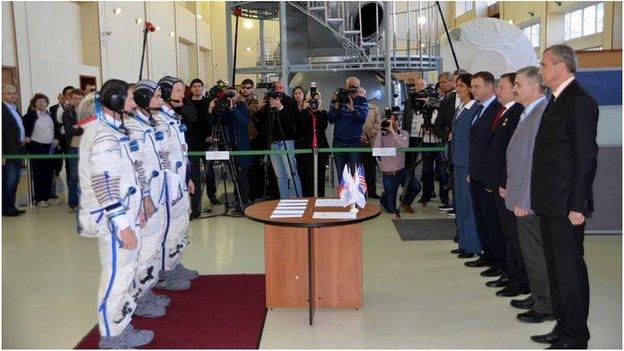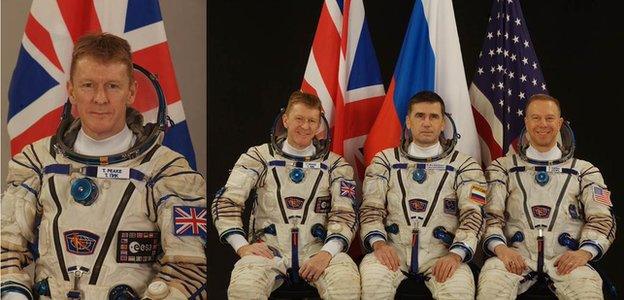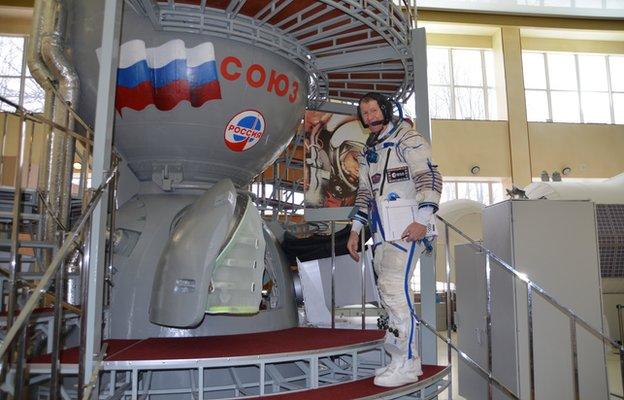Tim Peake passes final Soyuz exam
- Published

Tim Peake, nearest the camera (L), participates in a ceremony to mark his Soyuz achievement
British astronaut Tim Peake has passed his final Soyuz exam.
It means he is now qualified to fly in the Russian vehicle when it launches him to the International Space Station for a six-month stay in November.
It also means he can be on standby for the next crew launch at the end of May - just in case someone has to drop out.
"Major Tim", external, a former army helicopter pilot, will be the first UK-born, European Space Agency astronaut to live aboard the ISS.
He will be a flight engineer as part of Expeditions 46 and 47, external, serving his six months alongside American astronaut Tim Kopra and Russian cosmonaut Yuri Malenchenko, with whom he passed the Soyuz exam.
The test involved a six-hour session in a simulator at the Star City cosmonaut training complex near Moscow.
"This exam is the culmination of many months of training on the Soyuz spacecraft, which is our means of transport to and from the International Space Station," he told BBC News.
"Although it was a fairly long and gruelling test, it was also a very interesting and enjoyable experience.
"We conducted all phases of flight: launch, rendezvous, docking, undocking, re-entry and landing - during which time our examiners kept us busy with several emergency situations. Unfortunately, though, we can't now relax - we have to do it all again in six months when we will be the prime crew for launch!"
The Esa astronaut's mission to the ISS will be known as Principia, in honour of Sir Isaac Newton.
He will arrive at the station a couple of months after English soprano Sarah Brightman.
The multi-platinum-and-gold recording artist is reported to have paid more than $50m for a 10-day "holiday" on the orbiting platform.

Tim Peake will launch with Russian cosmonaut Yuri Malenchenko and US astronaut Tim Kopra

Going to the ISS involves spending many hours in the Soyuz simulator to understand its systems